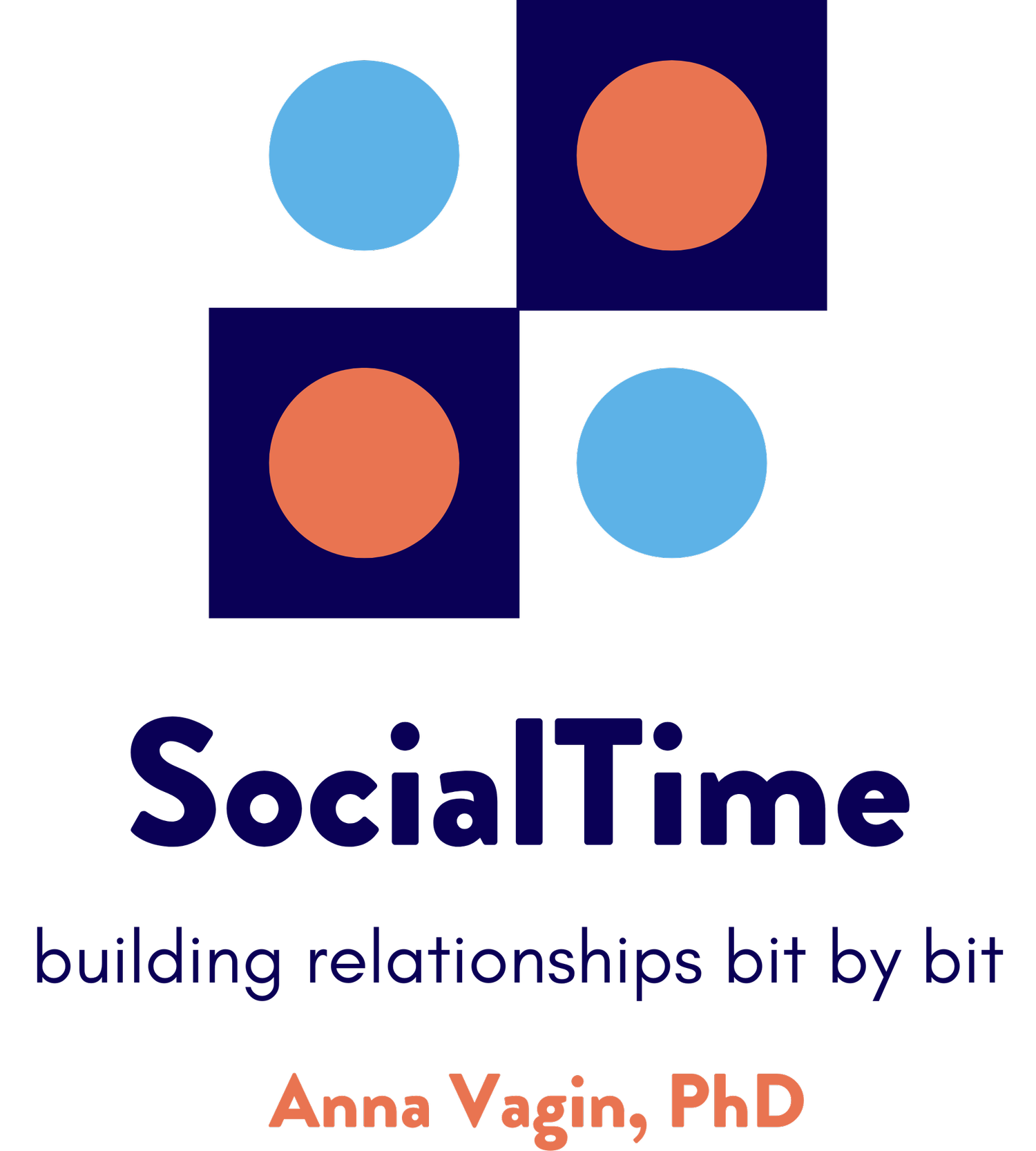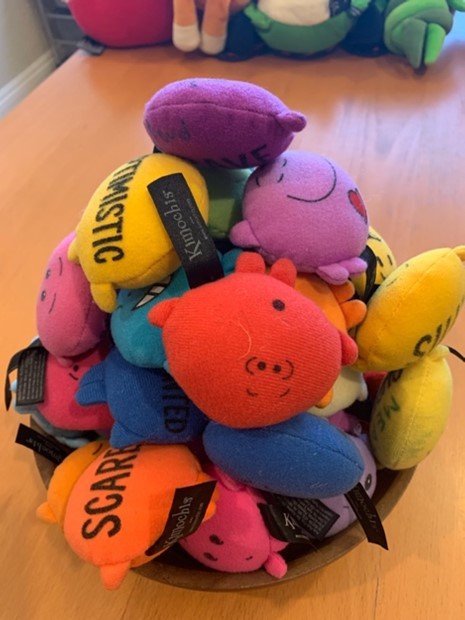New Series Starting! It’s all about feelings…
Did COVID allow us to feel lots of feelings – YES! Kimochis®
“If your emotional abilities aren’t in hand, if you don’t have self-awareness, if you are not able to manage distressing emotions, if you can’t have empathy and have effective relationships, then no matter how smart you are, you are not going to get very far.” —Daniel Goleman, Emotional Intelligence (2005)
Back in January 2022, a group of 2nd graders made a pile of all the feelings they’d experienced during COVID – just about the whole bag of Kimochis® emotions made it into the bowl!
Whether it’s during COVID or not, many students (and adults) struggle with uncomfortable feelings. Some may find it difficult to identify these feelings in themselves and others. Their uncomfortable feelings may seem really BIG, and it can be difficult to talk about experiences during which they have felt sad, scared, or mad. Perhaps you have students in your caseload who could benefit from some attention on these critical feelings – after all, everyone’s life is full of them!
How can we help our students grow emotionally, help them expand their emotional vocabulary? Well, using engaging animated videos with accompanying activities is one tool. YouCue Feelings was written to give clinicians and families recommended animations as well as easy activities to jumpstart this learning.
We can begin by watching selected videos that show characters feeling uncomfortable - feeling sad, mad, scared, or frustrated. We can encourage students to draw and talk about the characters, using Level 1 YouCues (pgs. 35-43). This exposes them to uncomfortable feelings obliquely, helping them feel comfortable talking about such experiences. We can then slowly move toward self-reflection, using Level 2 YouCues (pgs. 46-58). A character might feel sad. When we feel our student is ready to think about themselves, we can ask - "Have you ever felt that way?" Sometimes students will move to that self-reflection organically (yay!) with phrases like “I felt like that…” Encouraging students to draw pictures is one way that allows them to show us their experiences with or without spoken words.
Student illustration, YouCue Activity: Self-Sketching #2 (pg. 46) - Can you draw a time when you felt sad?
The student illustration above came from such a series of exercises. We were able to talk about the event portrayed in his sketch, rather than going right to the "What do you think you could have done to help yourself feel better..." We instead focused on talking about his sad feelings and thoughts. As adults we often want to move quickly to the fixing phase of our discussions. Instead, we can challenge ourselves to proceed more slowly - in the long run, we will foster deeper learning that way!
So, when a student draws or tells you about a time in which they felt uncomfortable, remember these options to facilitate emotional growth:
empathize (e.g., "It sounds like you are/were feeling really sad.")
validate (e.g., "If I didn't have anyone to play with, I might feel sad too.")
re-state (e.g., "You were sad wishing someone would play with you.")
use silence (e.g., wait a bit to see if the child has more to tell you.)
Although at first you may need to actively slow yourself down, over time you will become more comfortable with this slower pace, and the children with whom you work will appreciate your support in this important process.


